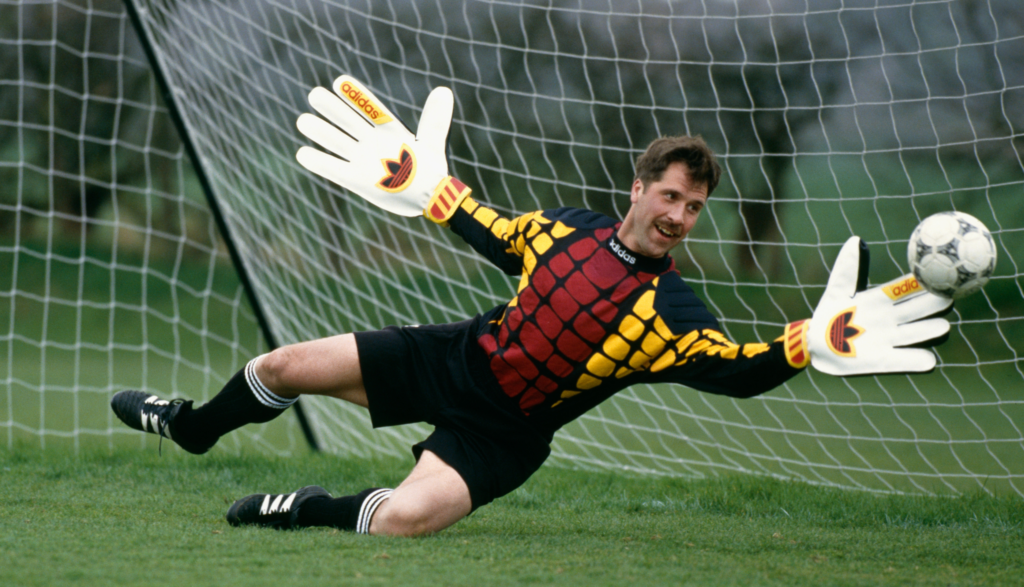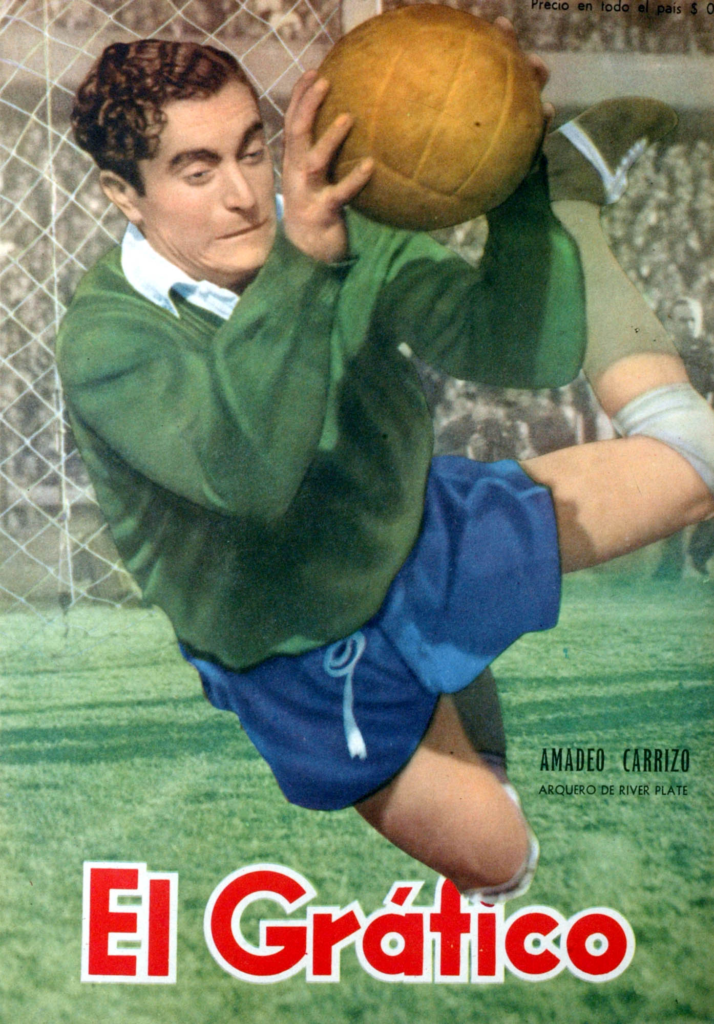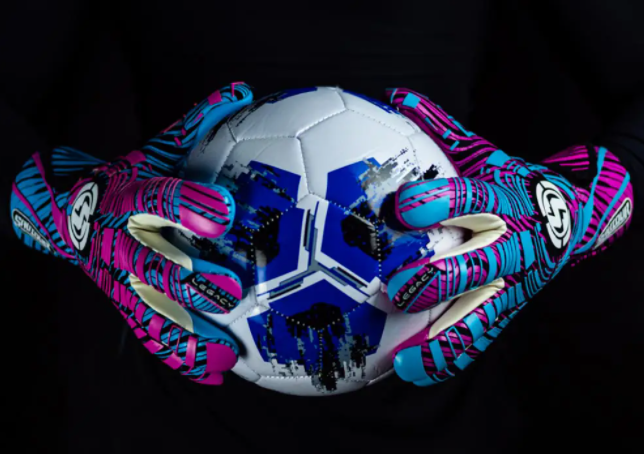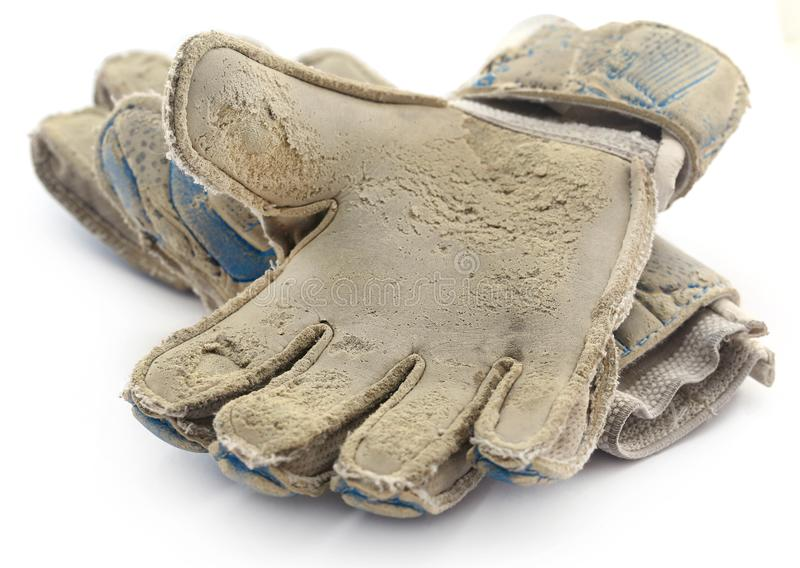If you watch a football match on TV or attend a youth, semi-professional, or five-a-side game, you will always see the goalkeepers of both teams wearing gloves. The gloves enable the players wearing them to protect their hands, especially when they are hit with a powerful strike on goal. Gloves also make it easier for a goalkeeper to catch the ball because of the extra grip given by the handwear. In addition, modern gloves include rubber and plastic protection areas on the top of the hands, fingers, and knuckles to avoid damage to the goalkeepers’ hands.

Why do Goalkeepers wear gloves? Football Goalkeepers wear gloves to enable them to protect their hands, especially when they are hit with a powerful strike on goal. Gloves also make it easier for a goalkeeper to catch the ball because of the extra grip given by the ever evolving technology. Cancelling out some of the effects of rain, cold, heat and dust. In addition, modern gloves include rubber and plastic protection areas on the top of the hands, fingers, and knuckles to avoid damage to the goalkeepers’ hands. Gloves started to become more widely used as football began to restart across the world following the end of the second world war in 1945.
Who was Amadeo Carrizo?

Even though goalkeeper gloves are now standard in the game, they were not always so. Goalkeepers used to play barehanded, and gloves were not part of their standard kit. Amadeo Carrizo, an Argentine goalkeeper, was the first to wear gloves. Between 1945 and 1968, Carrizo played for Argentina’s River Plate, and he was a pioneer in the way forward for goalkeepers across the world.
Carrizo saw many advances in football and life throughout his 25-year career. According to football articles from his era, he was also one of the first goalkeepers to exit his penalty area. The “sweeper-keeper” position is very prevalent in all of the top football leagues today. Carrizo was one of the first goalkeepers to emerge from the 18-yard box to clear the ball or pass to a teammate. He revolutionized goalkeeping and permanently altered it.
The Goalkeeper Gloves History
The first goalkeeping glove patent was issued in 1885. This was three years before the formation of the Football League. William Sykes, a ball-maker in the 19th century, invented a rubber glove so that the Victorian gentleman goalkeeper of that era would wear to keep their hands comfortable whilst keeping goal.
As the game evolved across the centuries, so did glove technology, and goalkeepers now have a variety of options at their disposal. They now have a choice of a flat palmed glove, cushioned roll finger gloves, or negative cut gloves and all of these will be based on their preferences. Although negative cut gloves are believed to be superior at dealing with crosses, most keepers seem to favor roll finger gloves since they are the most comfortable to wear.
Goalkeeper Gloves provide security

Gloves are used by contemporary goalkeepers because they offer a better grip on the ball although those watching the Premier League weekly will still see goalkeepers drop balls regularly as opposition players put pressure on the custodian of the goal. Also, goalkeepers do not want to confront a piledriver from an opposition player with their bare hands. Gloves, therefore, protect the keepers’ hands from serious damage during football matches.
In regular play during football matches, the goalkeeper will wear gloves to avoid having their fingers fractured or bending back. The current goalkeeping gloves, especially those that are utilised in the top leagues of the world, are precision made and protect the keeper’s hands so well that they seldom need to utilise first aid packs after a match has been completed.
How often should goalkeeper gloves be replaced?
Player preferences for wearing gloves many times may vary, but the average life of a goalkeeping glove is approximately twelve to fourteen matches, which is consistent for every pair. However, the professionals who play in the Premier League and the top leagues in the world will change their gloves often but will be consistent with the type and brand of gloves that they will use in matches. The teams in the Premier League all have kit sponsors, and as such, only the best and most comfortable gloves will be used by all the goalkeepers in the clubs’ various teams, from the youth teams to the first team.
All the gloves that the first-team squad goalkeepers use will be highly protective, good gripping gloves that may not be long-lasting but are of excellent quality and fulfill the function of required protection and care.

The general characteristics of the goalkeepers’ glove are the following:
Capability to grip
Gloves with a greater grip are often worn by professionals for matches and they only use the gloves during the game. Professionals use a different set of gloves for training so that the gloves they are most familiar with endure longer and can be used primarily when it matters most: during matches.
Capability to protect
As technology has advanced, so have modifications in sportswear, with new features being incorporated for greater protection and a more comfortable fit. Gloves are usually chosen based on their ability to save fingers and offer a good grip.
Flexibility
Flexibility and mobility for ball control are other characteristics that elite goalkeepers seek in a glove. Goalkeepers determine how far to go with a specific combination by evaluating the flexibility in each set of individual gloves.
Goalkeeping gloves also come in a variety of styles and these will create preferences amongst different goalkeepers who play in the global football leagues:
Gloves for playing matches
These are the gloves used by goalkeepers in official league matches. The protective material and latex paddings as well as the internal spines, and the flexible plastic protections, makes these gloves extremely costly. They also have a good grip and can control the ball. Due to their sensitivity, gloves of this caliber are only worn during official matches.
Gloves for Training
These gloves are usually used by non-league players and are used as training gloves by professional goalkeepers. They lack great protection and gripping capabilities but are more durable.
Gloves for inclement Weather
Players use these gloves to protect themselves from severe weather conditions such as hail, rain, and snow. Their palms are constructed of a high-quality gripping substance. The grip of such fabrics improves the handling for goalkeepers when matches are being played in poor weather conditions.
Most English Premier League supporters understand the basic reasons for a goalkeeper to wear gloves, but this article will hopefully have given those supporters more insight into those brightly coloured gloves that cover a goalkeeper’s hands during a match.
